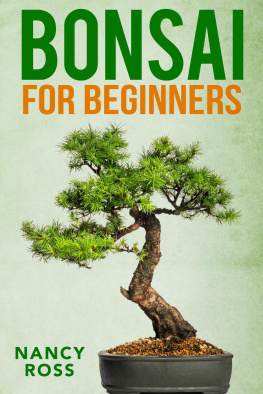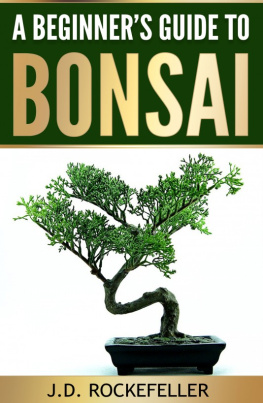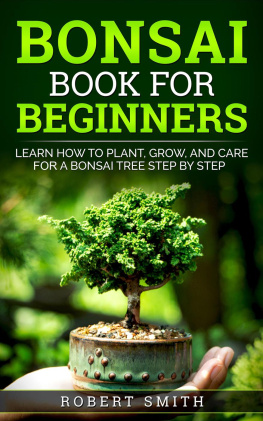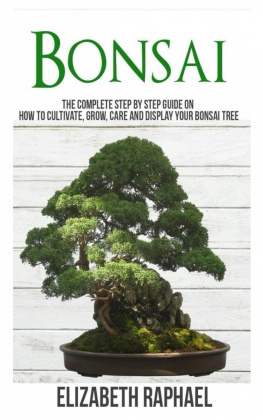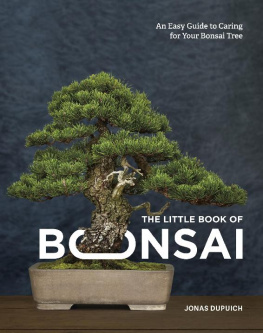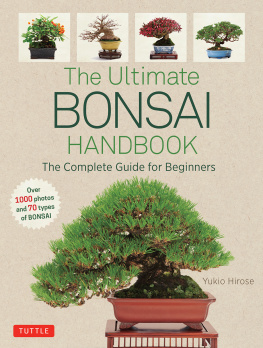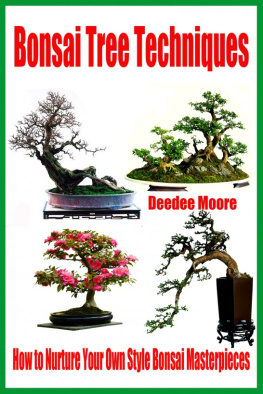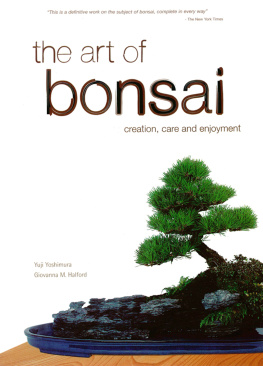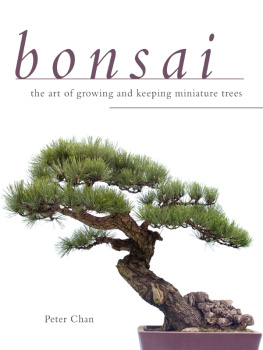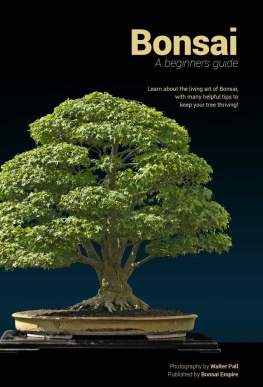Bonsai for Beginners Book
A Comprehensive Guide on the Art of Growing and Caring for Your Bonsai Tree. A Bonsai Instruction Book from Basic to the Most Advanced Techniques to Make Your Bonsai Healthy and Live Long
Kieran A. Barret
Copyright 2022 Kieran A. Barret
All rights reserved. No part of this publication may be reproduced, distributed, or transmitted in any form or by any means, including photocopying, recording, or other electronic or mechanical methods, without the prior written permission of the publisher, except in the case of brief quotations embodied in critical reviews and certain other noncommercial uses permitted by copyright law.
Limit of Liability/Disclaimer of Warranty: While the publisher and author have used their best efforts in preparing this book, they make no representations or warranties with respect to the accuracy or completeness of the contents of this book and specifically disclaim any implied warranties of merchantability or fitness for a particular purpose. No warranty may be created or extended by sales representatives or written sales materials. The advice and strategies contained herein may not be suitable for your situation. You should consult with a professional where appropriate. Neither the publisher nor author shall be liable for any loss of profit or any other commercial damages, including but not limited to special, incidental, consequential, or other damages.
Contents
INTRODUCTION

Bonsai is a plant (generally a shrub or a tree), which is planted in containers and grows like any regular mature tree via the different methods of training that are used. The height of bonsai is usually about a meter. This plant art uses living illusion to tell a story, and the bonsai art can be traced as far back as nearly two thousand years ago.
The term Bonsai originates from a Chinese word P'en Tsai, it has almost the same meaning and has same sound with the word "Bonsai". Bonsai is composed of two Japanese phrases "bon" and "sai". The word "bon" in Japanese means container, tray or pot while the word "sai" means potted planting or a tree.
The bonsai plant is both an outdoor and an indoor plant. The plant is essentially exposed to quite a few aesthetic and horticultural disciplines that enhances its botanical health and gives it the needed visual allure. One of the many qualities of the bonsai plant is that it enduring, and in the miniature-art world, it combines suggestion, thought and form while establishing its uniqueness.
Maintaining a healthy bonsai is a concern for both students and beginners. The solution is in finding how to manage the degree of stress that the bonsai plant undergoes. The word "stress" here implies the measure of horticultural practice that is put in place in the right quantity. Knowing what to do and in the right measure applies to every area of the bonsai cultivation, which include: pruning, altitude, temperature, nutrient, sun, soil, water, air etc.
There is a saying that "when you study bonsai, you will study more than what the plant is". Time is another vital part of bonsai cultivation, because it takes time for a tree to grow. Time doesn't have an alternative; it is usually moving forward and it is persistent.
Bonsai is all about miniature grown trees, which relates to attitudes, life, space and even time. The bonsai art has been known to be a fundamental part of custom, family, and culture in history. Your bonsai plant and art require a lot of patience, various artistic skill and a measure of sensibleness in gardening to achieve the best results.
CHAPTER 1

A Bonsai Memoire
More than two thousand years ago, the Chinese began to create miniature landscapes. The lesser the size of the reproduction of the landscapes from its original, the more potent it will be magically. Seven hundred years ago, at some point in the Kamakura period in Japan, the unique Japanese style of miniature art became well-known when the art form was copied from the Chinese. However, the Japanese did not start growing the whole landscapes like the Chinese, rather they grew individual trees and these trees are what we presently refer to as "bonsai".
Bonsai is a Japanese word, which mean planted in a container and it is usually misspelt as "banzai" or "bonzai". This form of art was copied from ancient Chinese horticultural practices, which was later modernized under the sway of Japanese Zen Buddhism, over one thousand years ago. The ultimate aim of bonsai is to create or grow a miniature tree that represents nature. Based on the Japanese style, the bonsai art is also known as "dwarf potted tree", and the term bonsai is also used as generic word for art forms that are related in other countries.
The size of the bonsai tree is achieved by carefully limiting its growth through the use of techniques such as: wiring branches, pruning, pinching buds and the use of fertilizers. The bonsai height is usually restrained to just about one meter or 4'. They are regular trees and not dwarf plants genetically. Almost any species of plant that grow true branch, has a trunk, or wooded stem, can be cultivated in a container to limit the leaves, the capacity of the food storage, or roots, can be used to make a bonsai.
Bonsai literally means a "tree in pot". The bonsai tree is as an imitation of nature in the shape of a small tree, with no visible display of human interference. They are grown in shallow containers and trained; and in need of frequent day-to-day watering. Also, they should be grown in a temperate weather condition. In addition, the bonsai needs to be in a greenhouse or indoors during winter to prevent the tree from drying wind.
Bonsai encourages our design abilities, artistic aesthetics and gardening skills, merging the bonsai gardeners art and horticultural skills. It can be more than just "a small Japanese tree".
Features of a Miniature landscape
- Small flowers, cones or fruits
- A moderate container that is shallow
- Miniature needles and leaves
- Foliage pads
- An interactive twisting of dead wood and life wood
- Twig and branch ramifications
- Surfaced root
- Wide trunks
Bonsai size classifications
One of the aims of bonsai is to make a practical representation of nature. The smaller the bonsai, the more abstract it, as opposed to appearing nature-like in a specific way. More than a few bonsai's classifications have been used over time, and even though the exact bonsai size classifications have remained undecided, bonsai classification still helps one to understand the botanical and the aesthetic features of bonsai. The classifications of bonsai were first based on the number of men that were required to raise the bonsai tree.
Bonsai size Classifications, decreasing in size, are as follows:
- Imperial - 152cm to 203cm (60 inches to 80 inches)
- Hachi-uye - 102cm to 152cm (40 inches to 60 inches)
- Dai / Omono - 76cm to 122cm (30 inches to 48 inches)
- Chiu / Chumono - 41cm to 91cm (16 inches to 36 inches)
- Katade-mochi - 25cm to 46cm (10 inches to 18 inches)
- Komono - 15cm to 25cm (6 inches to 10 inches)
- Shohin - 13cm to 20cm (5 inches to 8 inches)
- Mame - 5cm to 15cm (2 inches to 6 inches)
- Shito - 5cm to 10cm (2 inches to 4inches)
- Keshitsubo - 3cm to 8cm (1 inch to 3 inches)
Containers for Bonsai
Next page

